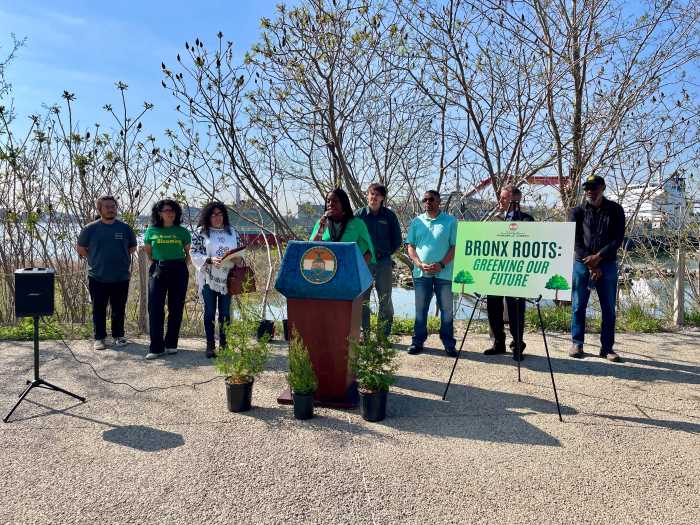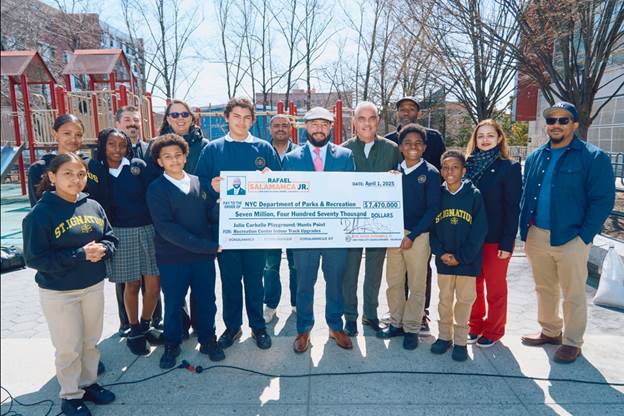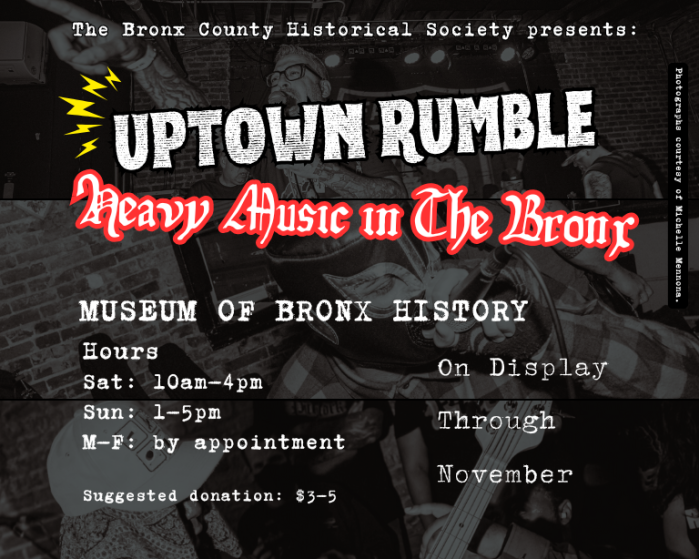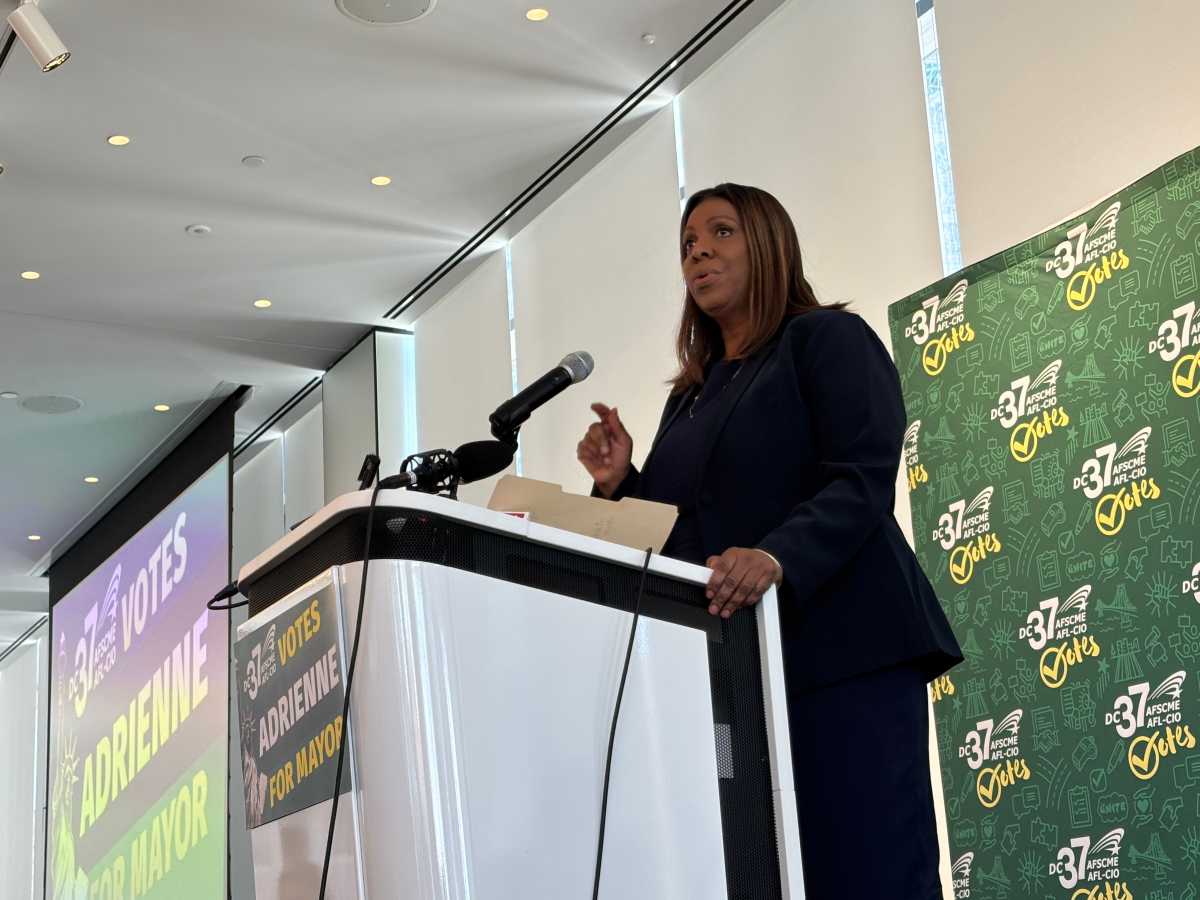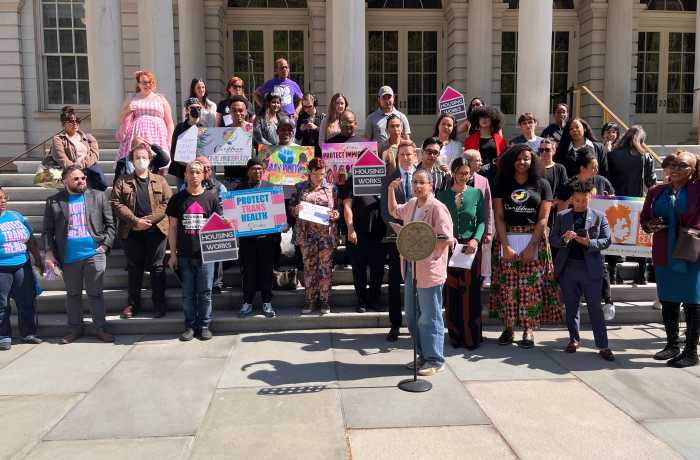City officials have announced plans to build a new marine transportation hub on the East River, across from the Hunts Point Fish Market, to help ease truck traffic in the South Bronx by moving food and goods from the Hunts Point Food Distribution Center by water over what the city has dubbed the “blue highway”.
The project, which includes a new barge, is expected to launch later this year and could divert up to 1,000 truck trips a month from the South Bronx, a community already burdened by high levels of air pollution. The plan is a collaboration between the New York City Economic Development Corporation (NYCEDC) and Con Agg Global (CAG), a company specializing in urban logistics.
Bronx Borough President Vanessa L. Gibson called the plan “innovative,” and said that it underscored the need for more sustainable distribution systems in the South Bronx.
“The launch of this new waterside transloading facility marks a major step forward for Hunts Point and the entire South Bronx,” Gibson said in a statement. “By shifting freight movement from our overcrowded roads to our underutilized waterways, we are easing congestion, improving air quality, and protecting the health of our communities, especially in neighborhoods that have been disproportionately impacted by truck traffic.”
To kick off the project, Con Agg Global will build and operate a temporary port for what’s known as a blue highway. Once the company gets all the necessary approvals from the New York City Council, it will replace the initial transportation hub with a permanent one.
The permanent project will use a pier system, built out of separate pieces that can be put together in different ways that will allow Con Agg Global to switch up the layout of the pier, depending on logistical needs. Con Agg Global said that the blue highway will primarily support wholesale food and beverage distribution to other New York City ports.
The move is part of a larger push to find more sustainable distribution methods, in part by using the city’s waterways instead of freight trucks, which have long caused disproportionate air pollution and congestion in the South Bronx.
Environmental justice advocates, including Maria Torres, president and COO of The Point CDC in Hunts Point, said the local nonprofit has spent the past 30 years pushing for more sustainable and equitable distribution methods.
“Turning to the waterfront to meet our basic transportation needs and mitigate some of the worst impacts of traffic congestion in our area is not only smart and just policy but it is consistent with the long history of our community, which was first written at the water’s edge,” Torres said.
New York City Council Member Rafael Salamanca Jr., who represents Hunts Point in District 17, said that Hunts Point residents had endured the consequences of freight trucks long enough. The council member grew up in the South Bronx and his father was a union worker at Hunts Point Produce Market.
“Hunts Point provided a future for my family and I,” Salamanca said in a statement. “The heavy industrial trucks that barrel in and out of Hunts Point each day also left another lasting impact on my life—a lifelong battle with asthma caused by truck pollution.”


